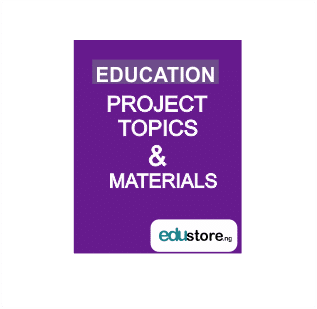Abstract
The study adopted a quasi – experimental research design. This study was carried out in Nsukka Local Government Area of Enugu State. The population for the study comprised 2,949 JSS1 students in 2015/2016 academic session from 16 secondary schools that offer computer studies in Nsukka Local Government of Enugu State. The study adopted multistage sampling technique. The sample size for this study was 70 JSS1 students from two purposively selected secondary schools using multistage purposive sampling techniques. Two sets of instruments were used for data collection – a 40 items multiple choices Word Processing Achievement Test (WPAT) and five items Word Processing Skill Acquisition Test (WPSAT). The instruments were subjected to face and content validation by three experts. The reliability of the WPAT was established using Kuder Richardson 21 (K–R 21) formula in which a coefficient of 0.95 was obtained while Kendall’s W Test was used to establish the internal consistency of the Skill Acquisition test and a reliability coefficient of 0.94 was obtained. Prior to the commencement of the experiment, all students were subjected to a pre – test in order to obtain the pre – test scores for the study. Community Secondary School Isienu was assigned to Synchronous e – learning mode while Model Secondary School Nsukka was assigned to Asynchronous e- learning mode. The experiment was carried out during the normal school hours using the school time – table for classes. The duration for the experiment was two weeks. At the end of the experiment, the teachers administered the post- test to the students in the two groups. The data collected from the pre – test and post – test using the two set of instruments (Achievement test and Skill acquisition test) were analysed using mean for answering the research questions while analysis for covariance (ANCOVA) was used for testing the hypotheses at 0.05 level of significance. Based on the data collected and analyzed, the study found that the treatments (synchronous and asynchronous e – learning modes) appreciably increased academic achievement and skill acquisition of the JSS1 students in word processing and that gender of the students does have slight influence on their achievement and skill acquisition in word processing in relation to the treatments.
CHAPTER ONE
INTRODUCTION
Background of the Study
The integration of computers in education has led to the introduction of computer studies in schools at different levels. Computer studies is a subject offered in secondary schools. It is the study of computer science, which includes computer and algorithmic processes, computer principles, hardware and software designs, their applications, and their impact on society. Computer studies is relevant for all students because it incorporates a broad range of transferable problem- solving skills and techniques, including logical thinking, creative design, synthesis, and evaluation. It also teaches generically useful skills in such areas as communication, time management, organization, and teamwork. Computer studies provide the knowledge and skills to understand the underpinnings of current computer technology; and preparation for emerging technologies. A foundation in this discipline will introduce students to the excitement and opportunities afforded by this dynamic field and will begin to prepare them for a range of rewarding careers. The computer studies programme will build a strong foundation for those who wish to move on to further study and train in specialized areas such as computer programming, database analysis, computer science, computer education, computer engineering, software engineering, information technology, game development, and word processing skills.
DOWNLOAD COMPLETE WORK- For Reference Only: Materials are for research, citation, and idea generation purposes and not for submission as your original final year project work.
- Avoid Plagiarism: Do not copy or submit this content as your own project. Doing so may result in academic consequences.
- Use as a Framework: This complete project research material should guide the development of your own final year project work.
- Academic Access: This platform is designed to reduce the stress of visiting school libraries by providing easy access to research materials.
- Institutional Support: Tertiary institutions encourage the review of previous academic works such as journals and theses.
- Open Education: The site is maintained through paid subscriptions to continue offering open access educational resources.






